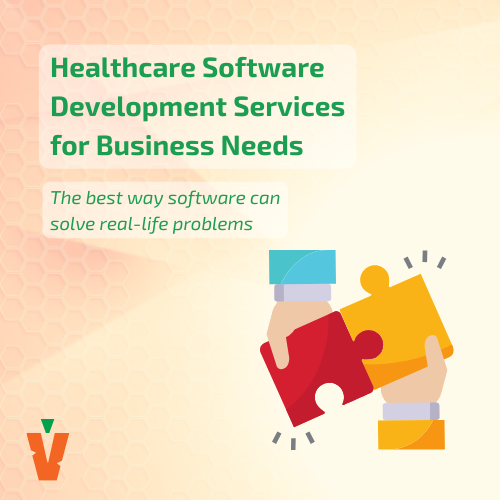Healthcare technology needs a paradigm shift. We must turn to simplicity and utility as essential software KPIs.
There’s a gap between the advanced software we seem keen on building and its mission of better patient care. Many of the new technologies are too complicated to fit into the schedules of busy healthcare workers, so much so that entire projects fail at the implementation level. This reduces the intended advantages of digitization, harming developers, providers, and patients.
As leaders of software development companies, we must steer our teams toward solutions that solve the needs of healthcare workers. Whether building medical or administrative tech, that’s how we ensure our work supports the industry and contributes to better outcomes.
Or, as one of the top voices in healthcare put it:
Healthcare Software Has a Unique Purpose
High session duration is good news in many types of software, as it suggests people engage with your platform. But things are different in healthcare, where software aims to alleviate the burden placed on its users. In real-world terms, healthcare users should spend as little time in front of the screen as possible.
Even though software could improve healthcare outcomes by leaps and bounds, the industry is slow to digitize. That’s because (among other factors) healthcare workers claim that adopting technology makes their lives harder instead of easier. Why does this happen?
Part of the problem lies in legacy infrastructure and compliance struggles of technology for healthcare, but that’s not all. The design is a common issue contributing to resistance among workers. If the interface is complex, unintuitive, or doesn’t align with their specific needs, it can hinder their workflow and do more harm than good.
That’s why executives should keep their teams laser-focused on the purpose. Otherwise, your engineers and PMs might get carried away with exciting ideas without adding functional value. Do you feel uncertain how to prevent this? The Vitamin team can jump in to consult you if you feel this is happening.
What Do Healthcare Software Users Actually Need?
Efficiency is at the core of successful technology for healthcare. What does this mean in practice? Software solutions should address the needs of healthcare workers in the smoothest possible way.
Pain points are an excellent place to start — think about menial, time-consuming, and error-prone daily work. Software is good at performing these tasks with much greater accuracy, whether by automating supply purchases or offering compatible drug suggestions to pharmacists.
With this principle in mind, we can break down the software KPI of simplicity into three factors:
- Usability — having user-friendly, accessible, and easy-to-use tools.
- Compliance — the ability to protect PHI and connect with other technology in the ecosystem.
- Functionality — having capabilities that facilitate the daily workflow in healthcare institutions.
During the eight years of Vitamin Software’s existence, we’ve encountered many talented software development teams losing sight of these goals.
In their pursuit of modern tools, companies may disregard the primary objective of their final products — reducing the time end-users spend in front of the screens. They add modern and often unnecessary features to embellish the solution, but their users become dissatisfied, and their revenue, reputation, and reliability suffer.
Do You Believe These Healthcare Software Myths?
Given the slow rate of tech adoption in this industry, it’s no wonder there’s plenty of research about the causes. We now have the data about developers’ and leaders’ beliefs that result in them missing the mark with their software KPIs and design.
These myths cause many challenges in creating healthcare software solutions that match the needs of real-life users:
- Doctors don’t feel comfortable with technology. Developers shouldn’t disregard the effort required to make software easy to use. With more tech-savvy young people entering the workforce, the issue is more often that technology presented to them blocks workflow and patient care.
- Everything should be on one page. To prevent the need to switch tabs, developers send all data to a single page, which becomes too information-stuffed to use. It’s better to create an intuitive user interface that makes it easy to navigate between screens.
Or, conversely…
- The more functionalities, the better. Some healthcare software solutions have every possible feature a medical worker might imagine. Although well-intentioned, this method could bring more trouble than worth. If functions don’t add value, they degrade usability.
Want to discover more myths about technology for healthcare? This article on HIMSS is an excellent resource.
How to Achieve Simplicity in Healthcare Software
Prioritize usability to build healthcare software solutions that perform their intended purpose. According to the definitions of usability by Jakob Nielsen, a pioneer and researcher in the field of usable design, software should have these five characteristics: learnability, memorability, low error rates, efficiency, and satisfaction.
You can achieve this even with technology for healthcare with intricate background processes. The trick is to put the necessary features at the forefront and keep the remaining complexities under the hood.
These traits are great in theory, but how do you put them to practice?
For one, include actual end-users in the project from the beginning. Doctors, nurses, and administrators will provide useful insights into what they need, and which features fall in the category of clutter. On top of that, here are three strategies to help you score high on the right software KPIs:
- Streamline the UI. Keep the interface simple, intuitive, and easy to navigate, with minimal clutter. Apply a consistent design language to increase accessibility and make a familiar environment for users.
- Prioritize core features. Identify and prioritize essential functions that directly address user needs. Scratch everything else or make it optional to avoid feature bloat.
- Make the design responsive. Ensure that the software is responsive and accessible on various screen sizes. This is vital in healthcare, as professionals use different devices for different contexts.
How Vitamin Overcomes Feature Creep
At Vitamin, we understand that successful software development is about solving real business challenges. This focus lets us avoid feature creep and make usability a top priority.
Before beginning a project, our Business Analyst ensures the proposed solution aligns with the client’s objectives. We focus on the root of their pain points, seeking technical solutions for your business needs.
We kick off each project with what we call the Vitamin Sanity Check. It involves an evaluation of the cost, timeline, and required features. This step allows us to set clear expectations, mitigating the risk of scope expansion.
Recognizing that we aren’t medical professionals, we involve healthcare experts in our development processes. Doctors, nurses, pharmacists, and insurers guide our teams, guaranteeing the solutions match their practical requirements.
Key Takeaway: Know Your Why
Successful technology for healthcare should always start with a clear ‘why,’ and your team must not lose sight of it. Regularly consult with physicians, gather feedback, and iterate your software by adding necessary changes as needed. It might be a more complex process than building big, but it aligns your software KPIs with real-world success, and the results are incomparable.
Are you wondering if your project has one too many features? Schedule a consultation and have our expert team analyze it.



.png)
